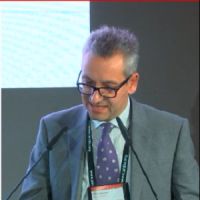The influence of Social Media (SoMe) is significant, with over 2 billion users worldwide and over 70% of Americans participating online. Amongst the most popular SoMe platforms, Twitter seems to be the most popular in the field of cardiovascular medicine. A recent search in PubMed revealed 4,749 publications since 2008 which included the terms ‘SoMe and medicine’.
SoMe in Cardiology
The social media platform Twitter allows users to post content up to a limit of 280 characters, the engagement with these posts can be measured by the number of impressions. With all this content available, hashtags (#) are used to group certain posts relating to a certain topic, a popular cardiology hashtag being #CardioTwitter.
In particular, the free open-access medical education (#FOAMed) hashtags have gained significant popularity. By using these hashtags, clinicians of all levels can get involved in discussions and advise from around the world on echocardiograms and angiograms etc. This has also impacted the younger generation of cardiologists as the fellows-in-training (FITs) have also been able to use SoMe to generate a hashtag, #FITSurvivalGuide, which provided access to basic clinical topics. For academic cardiologists, SoMe has also become more prominent in their field. It is now not uncommon for academics to demonstrate the impact of their work digitally.
The opportunity for SoMe to generate real-world connections has brought together different groups in the field from around the world. For example, the Women in Cardiology movement has gained a large following on both Twitter and Facebook. These SoMe platforms have allowed this group to discuss issues of importance affecting the female cardiologist population, including issues with the gender pay gap and work-life balance challenges. Connections have also been made for grassroots cardiology advocacy groups, for example, #GoRedForWomen and #SouthAsianCVD to name a few.
Journals and Conferences
SoMe can also generate engagement for cardiovascular journals and conferences. Popularity has been seen to increase through the use of hashtags and polls to promote engagement amongst followers. Journals such as @JACCJournals have been known to use SoMe Editors – physicians with a combination of expertise in the field and a large following/great understanding of SoMe. The influence of SoMe has also prompted the creation of medical content purely for publication on Twitter, for example, the virtual journal created by a group of interventional cardiologists called “Tweet-book: Cardiovascular Interventions”. Virtual clubs and online podcasts have also allowed for further discussions on journal articles, creating a ‘virtual meeting of the minds’ attended by cardiologists from around the world.
In response to the great influence of SoMe, journals now consider alternative metrics (also called, ‘altmetrics’) which take into consideration factors such as social media engagement and not solely the number of citations. Although the influence of social media influence on journal article citations has been previously debated, a recent study demonstrated a relatively significant correlation between altmetrics and journal citations.
Cardiovascular conferences have also benefitted from SoMe popularity as the novelty of being able to attend conferences from anywhere in the world has increased attendance. Through the use of Twitter, Periscope, Instagram and Facebook, attendees can contribute to discussions online both during and after the conference has ended.
Best Practices on SoMe
It is important to remember that with the great influence of social media, rules need to be considered, as inappropriate posts can have implications. In the USA, professional medical discussions need to adhere to HIPAA (Health Insurance Portability and Accountability Act). There have been many cases where physicians have had legal action taken against them as, whilst they had information omitted from their posts, patients were still identifiable. Whereas in the European Union, GDPR (General Data Protection Rules) now states that anonymous data is no longer personal. In any case, all users of SoMe should be aware of the regulations they could be restricted to.
Whilst precautions should be taken, the American Hospital Association stated that more institutions are warming up to the idea of using social media. The association recognised that there could be some risks for those not participating in SoMe, for example, being unable to reach a wide audience and missing opportunities to quickly correct any information.
The Future of SoMe in Cardiology
With the popularity of SoMe in healthcare, there are some limitations to publishing this content on these types of platforms. The main challenge being the storage of content, with most social media sites being quite archaic in this respect. Future developments could include the ability to store and search for previously-posted content with ease. We may also see the rise in virtual congresses, where monetary issues would not be a challenge to overcome, increasing attendance.
The online medical SoMe content could also contribute to the continuing medical education credits scheme. However, there would need to be an innovative way of tracking the use of this. As social media can already track interactions with the platform and also the attendances on live-streams, this could be a possibility for the future. Also, the case studies posted on SoMe could give rise to virtual multidisciplinary team meetings, in which specific experts would be able to contribute to a patient’s outcomes from across the globe.
Conclusion
Social media is constantly evolving and so is how we choose to utilise it. Medical professionals need to lead the discussions on these platforms to generate innovative discussions. Through its ability to generate fast and global discussions instantly, cardiology, and other medical fields should embrace the use of social media, whilst also being aware of the responsibilities that accompany it.
Source: JACC
Image Credit: iStock



























